William Oakes House (1878)
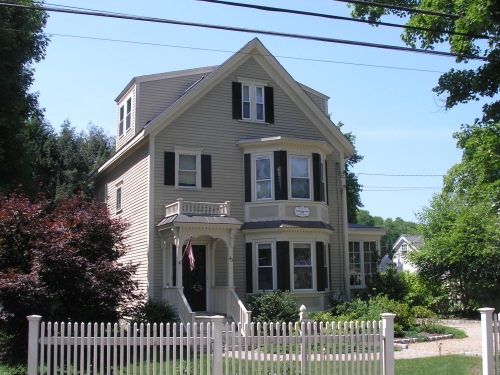
The house at 43 Eliot Street in South Natick was built in in 1878 for William Oakes. It is believed to occupy the site of an apple orchard planted for Rev. Oliver Peabody by the Natick Praying Indians.

The house at 43 Eliot Street in South Natick was built in in 1878 for William Oakes. It is believed to occupy the site of an apple orchard planted for Rev. Oliver Peabody by the Natick Praying Indians.
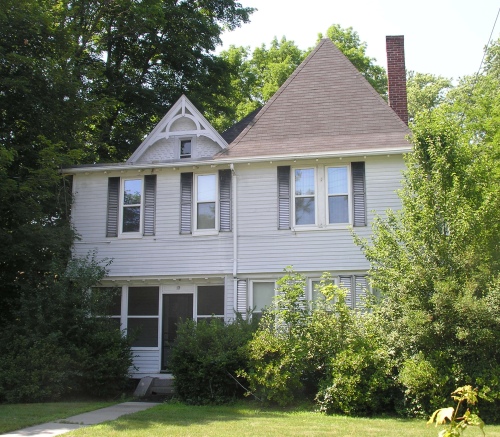
The house at 19 Eliot Street in South Natick was built in the 1880s by Harper Leavitt on land once owned by David Morse. Leavitt died in 1893 and in 1895 the house was purchased by Sacred Heart Church for use as a rectory
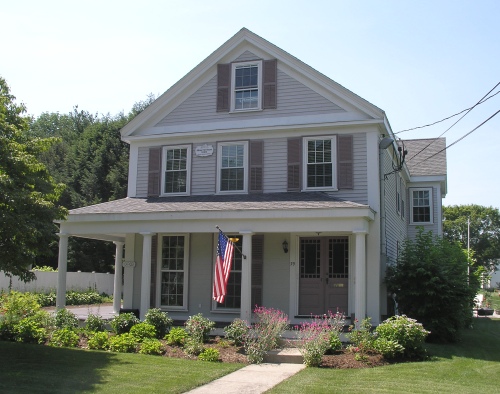
The Atkins-Fair House is a Greek Revival-style dwelling at 39 Eliot Street in South Natick. The house was built in 1839 for the newly-married John Atkins. As written in the entry by Horace Mann on the “David Morse Place and Pelatiah Morse Place” in A Review of the First Fourteen Years of the Historical, Natural History and Library Society of South Natick, Mass. (1884):
In 1794, the old house and a portion of the David Morse estate had passed to the Welles family, and Hon. John Welles sold it to Capt. John Atkins of Truro. Atkins became a leader in society at Natick, and held important town offices. In the adjustment of “Lady Lothrop‘s” estate and the litigation that attended it, he was a conspicuous party; he is also one of the stars of Mrs. Stowe’s “Old Town Folks.” For a number of years he was one of the guardians of the Natick Indians, and during his administration of their affairs the last of their lands, the possessions of Hannah Thomas, passed to white ownership. In 1847 John Atkins sold the Morse estate to Hon. John Welles, and the so-called Eliot acre was deeded to Atkins by Hon. Chester Adams.
In 1883, the 1839 Atkins House was bought by William Fair.
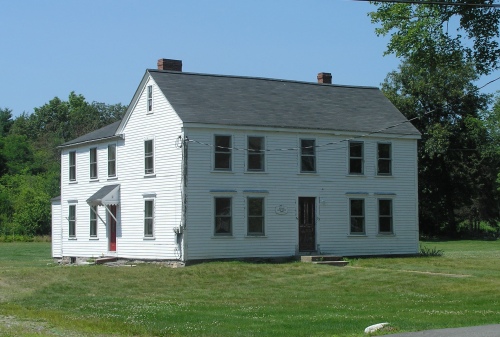
Peletiah Morse’s Tavern, at 33 Eliot Street in South Natick, was built in 1748 to serve as a residence, tavern and stage stop on the Old Hartford Road. Located not far from the 1730 house of Morse’s father, David Morse, it was one of the oldest taverns in Natick and the last to survive from the colonial era, although its center chimney was later removed. According to tradition, an acre of land on the property had been a gift from the Natick Praying Indians to John Eliot. The planned construction of new buildings on the property around the house by a Montessori School has recently caused controversy in town. In 2008, the school was fined for improperly removing trees from the land.
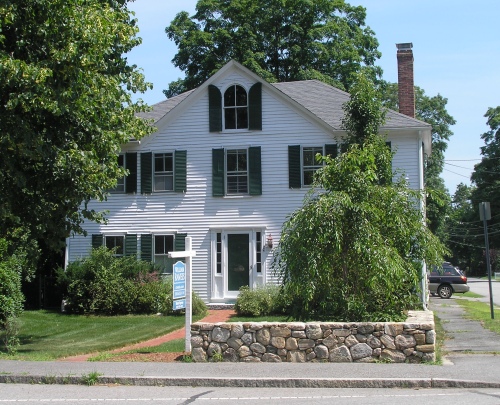
The Weigand or Weihgant House, at 24 Eliot Street in South Natick, was built between 1824 and 1830. It is not certain who built the house, but by the mid-nineteenth century it was owned by Samuel Walcott, a shoe manufacturer. In 1856 or 1863, Philip Weihgant, a cordwainer, bought the house. His son, Dr. Frank J. Weigand, graduated from Long Island Medical College in Brooklyn in 1900 and practiced in Richmond Hill, Queens. The Federal-style Weigand House has a front gable added later in the nineteenth-century.
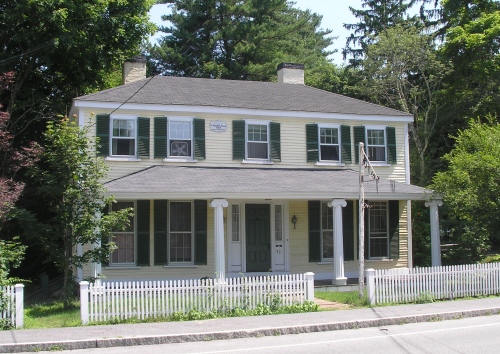
Dr. Stephen Hodgman Spaulding (1787-1866) was born in Chelmsford and studied three years at the Harvard Medical School. As described in the History of Middlesex County, Vol. III (1890):
He commenced practice in Littleton, Mass., remained a few years, then removed to Dublin, New Hampshire, where he secured an excellent and lucrative practice. After a few years he found that the severity of the winters, and the almost impassable state of the roads—being obliged to travel with snowshoes without any regard to boundary lines or fences —was telling upon his health, and this decided him to accept an invitation to settle in South Natick, Mass., where again he succeeded in building up an extensive practice.
In about 1841 he removed to Newton Upper Falls, and associated himself with his son-in-law, Dr. Samuel S. Whitney, who had married his only child, Sarah W. Spalding, in general practice. In 1843 his house and stable were burned. He then settled in Reading, Mass., and continued in practice there for several years. Later in life, after an active practice of thirty years, he retired, and removing back to South Natick, made that his home till he died. In his last years he was a great sufferer from disease. He was a member of the Unitarian Church and Parish of South Natick, and the large number at his funeral attested the respect and esteem of his towns-people.
His 1829 hipped-roof house is at 42 Eliot Street in South Natick.

Moses Eames built the Greek Revival house at 4 Pleasant Street in South Natick in the 1830s, on land he had acquired in 1831. Eames later built a larger home next door on Pleasant Street in 1839. In 1845, he sold the earlier house to Lucy Morse and ten years later it was purchased by Aaron Wheeler. It remained in the Wheeler family until about 1918 and has since had other owners. The house briefly served as a restaurant in the late-1950s.